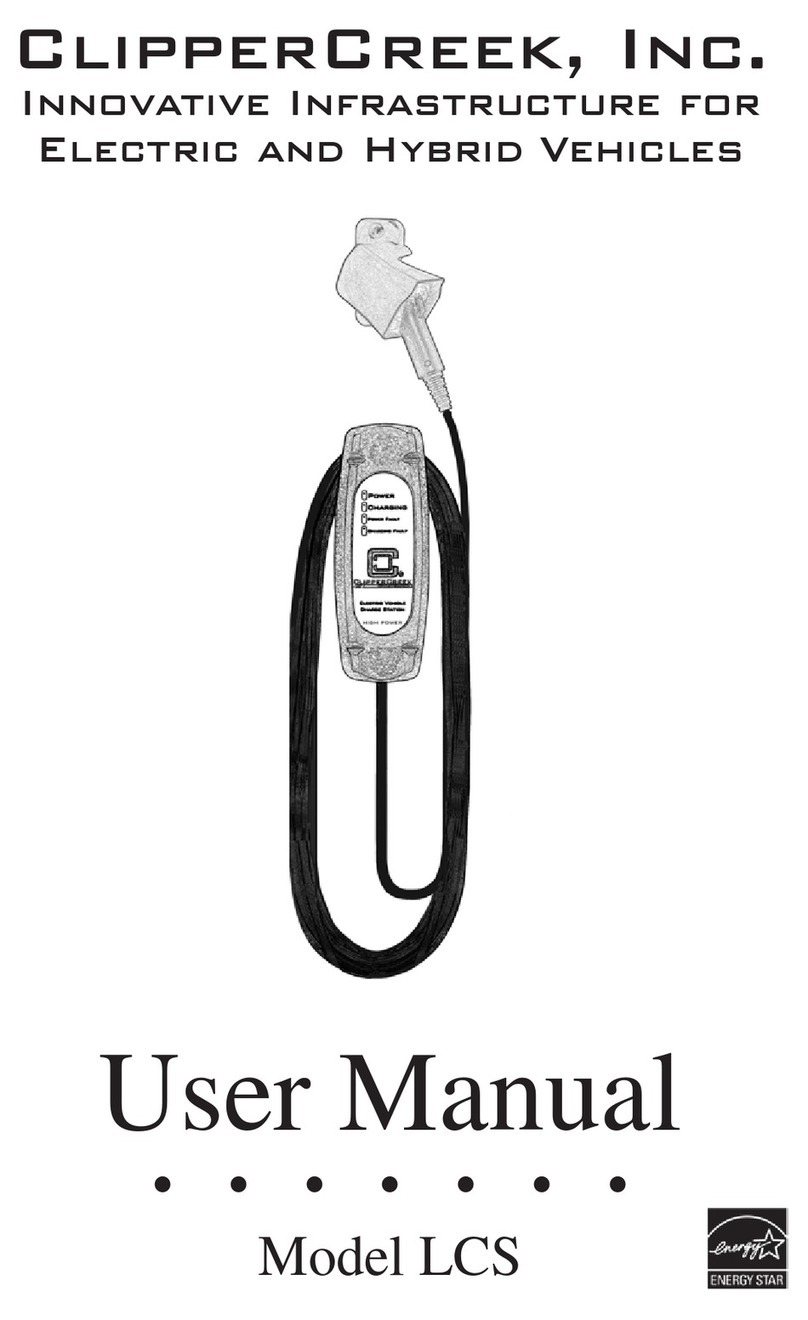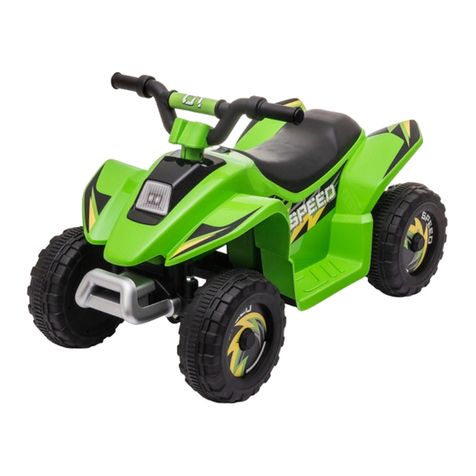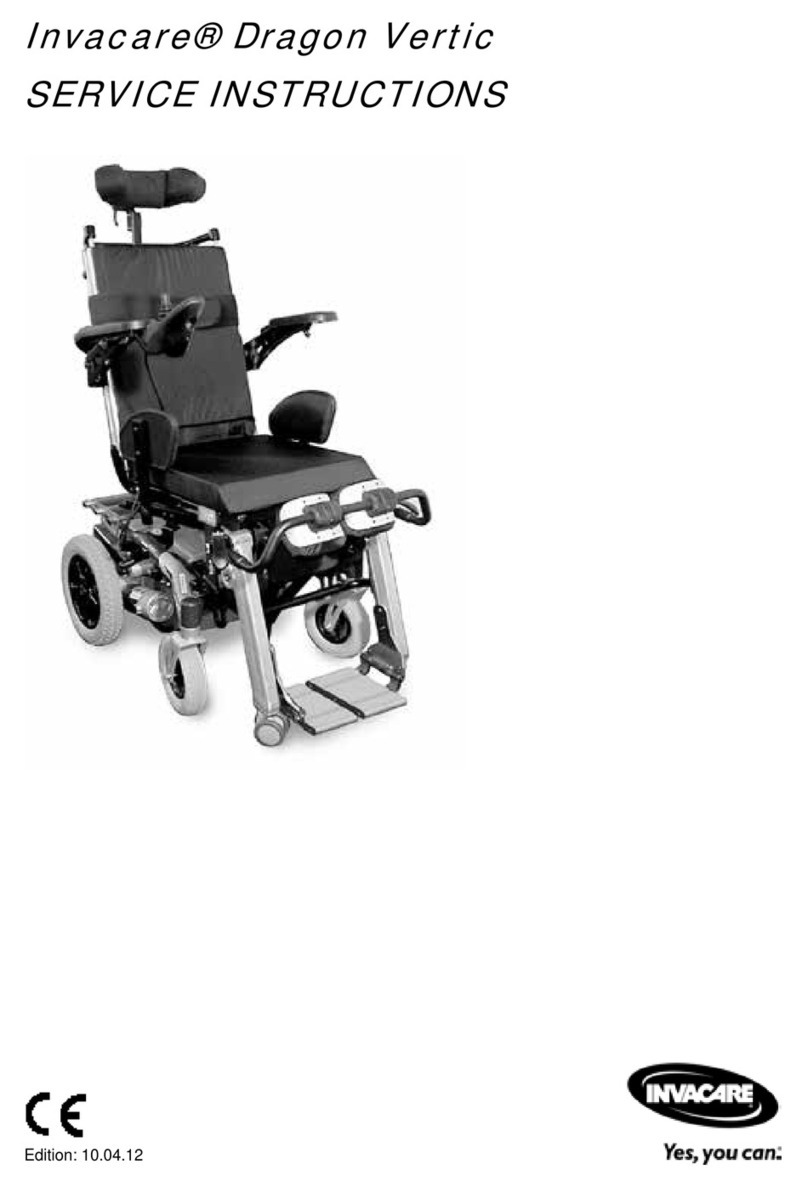ClipperCreek ECS User manual

ClipperCreek, Inc.
Innovative Infrastructure for
Electric and Hybrid Vehicles
• • • • • • •
Model ECS
User Manual

ECS User Manual
Page 2
PLEASE NOTE
This user’s manual includes the latest information at the time of printing.
ClipperCreek, Inc. reservesthe right to makechanges to thisproduct without further
notice. Changes or modications to this product by other than an authorized service
facility may void the product warranty.
If you have questions about the use of this product, contact your customer service
representative. Refer to the Customer Support section located in this guide.
ECS User Manual, Version 9, January 2022
Copyright © 2020 ClipperCreek, Inc.
All rights reserved. Printed in the USA.
Manual Number: 7004-0008-B
WARNING: This product can expose you
to chemicals, including Carbon Black, which
is known to the State of California to cause
cancer. For more information go to:
www.P65Warnings.ca.gov
To view the latest version of this manual please visit
clippercreek.com/installation-manuals

ECS User Manual
Page 3
CONTENTS
IMPORTANT SAFETY INSTRUCTIONS ...................................5
Instructions Pertaining to a Risk of Fire or Electric Shock ......................5
Additonal Safety Information ...................................................................6
FCC INFORMATION......................................................................7
OPERATION ....................................................................................8
THE ECS FRONT PANEL - Ground (Earth) Monitor.........................9
THE ECS FRONT PANEL - Isolation (Insulation) Monitor..............10
MOUNTING THE SAE J1772 ECS CONNECTOR HOLSTER
......12
CHARGE CABLE WRAP GUIDELINES...................................13
MAINTENANCE............................................................................14
SPECIFICATIONS.........................................................................15
CUSTOMER SUPPORT................................................................16
WARRANTY INFORMATION....................................................17

ECS User Manual
Page 4
ILLUSTRATIONS
Figures
1. The ECS with Ground Monitor Front Panel .........................................9
2. The ECS with Isolation Monitor Front Panel.....................................10
3.
Mounting the Holster using the Exterior Wood Screws and Washers
....12
4. Drape the Charge Cable Loosely around the ECS Enclosure.............13
Tables
1. Front Panel LED Information for Ground Monitor-equipped ECS......9
2.
Front Panel LED information for an Isolation Monitor-equipped ECS
...11

ECS User Manual
Page 5
IMPORTANT SAFETY INSTRUCTIONS
Carefully read these instructions and the charging instructions in your vehicle
owner’s handbook before charging your electric vehicle.
The following symbols may be found in this manual or on labels axed to the
charge station:
NOTE: This means pay particular attention. Notes contain helpful
suggestions.
CAUTION: This symbol means be careful. You are capable of doing
something that might result in damage to the equipment.
WARNING: This symbol means danger. This is a situation that could
cause bodily injury. Before working on any electrical equipment, be
aware of the hazards involved with electrical circuitry and standard
practices for preventing accidents.
Instructions Pertaining to a Risk of Fire or Electric Shock
When using the the ECS, basic electrical safety precautions should be followed:
• Use this charge station to charge electric vehicles equipped with an
SAE J1772 charge port only. Consult the vehicle owner’s manual to
determine if the vehicle is equipped with the correct charge port.
• Make certain the charge station SAE J1772 charge cable is positioned
so it will not be stepped on, tripped over, or otherwise subjected to
damage or stress.
• This product contains no user serviceable parts. Consult the Customer
Support section in this manual for service information. Do not attempt
to repair or service the charge station yourself.
• Do not operate your charge station if it or the SAE J1772 charge cable
is physically open, cracked, frayed, or otherwise visibly damaged.
Contact your Service Representative for service immediately. Consult
the Customer Support section in this manual for information on the
Service Representative in your area.
• Not for use in commercial garages where a COMMERCIAL GARAGE
is dened as a facility (or portion thereof) used for the repair of
internal combustion vehicles in which the area may be classied due to
ammable vapors being present (such as from gasoline.)
• Do not place ngers inside of the coupler end of the SAE J1772 charge
cable.
• Do not allow children to operate this device. Adult supervision is
mandatory when children are in proximity to a charge station that is in
use.

ECS User Manual
Page 6
•
230V plugs are specically designed for occasional relocation, such as
moving from one home to another home
.
•
For personal safety, the circuit breaker MUST be turned o prior to
plugging in AND/OR unplugging 230V appliances (including this EVSE).
•
A dedicated NEMA outlet is highly recommended. NEMA outlets
wear out over time particularly when repeated insertion and removal of
NEMA plugs occur. A worn outlet can cause the plug connection to
overheat and become a re hazard. It is recommended that plug-in EVSE
remain plugged in.
• Have an electrician verify all wiring to the outlet is correct and in
compliance with local code requirements before connecting the EVSE.
• Do Not use this EVSE with an extension cord or wall plug adapter. Plug
this EVSE directly into the outlet.
• Ensure that the EVSE is mounted to the wall or placed on a support so it
does not hang from the outlet. Outlets are not designed to support the
weight of the EVSE.
Addtional Safety Information
WARNING: Turn o power to the EVSE at the circuit breaker panel
before moving, servicing or cleaning the unit.
NOTE: VENTILATION - Some electric vehicles require an external
ventilation system to prevent the accumulation of hazardous or
explosive gases when charging indoors. Consult the vehicle owner’s
manual to determine if your vehicle requires ventilation during indoor
charging.
NOTE: Vehicles which conform to the SAE J1772 standard for
communication can inform the charge station that they require an
exhaust fan. The ECS is not equipped to control ventilation fans. Do
not charge the vehicle with the ECS if ventilation is required.
CAUTION: DO NOT CHARGE a vehicle indoors if it requires
ventilation. Contact your Service Representative for information.
Save these instructions for future reference.
THIS DEVICE IS NOT INTENDED FOR USE WITH
AN EXTENSION CORD
.

ECS User Manual
Page 7
FCC INFORMATION
This device complies with Part 15 of the FCC rules. Operation is subject to the
following two conditions: (1) This device may not cause harmful interference,
and (2) This device must accept any interference received, including interference
that may cause undesired operation.
This product has been designed to protect against Radio Frequency Interference
(RFI). However, there are some instances where high powered radio signals or
nearby RF-producing equipment (such as digital phones, RF communications
equipment, etc.) could aect operation.
If interference to your charge station is suspected, we suggest the following
steps be taken before consulting your ClipperCreek Sales and Service
Representative for assistance:
1. Reorient or relocate nearby electrical appliances or equipment during
charging.
2. Turn o nearby electrical appliances or equipment during charging.
CAUTION: Changes or modications to this product by other than an
authorized service facility may void FCC compliance.

ECS User Manual
Page 8
OPERATION
The ECS Electric Vehicle Charging Station is a Portable charging station that
provides the Plug-in Hybrid or Battery Electric Vehicle (together Plug-In Electric
Vehicles, or “PEV”) user with a safe and manageable link between the power grid
and the PEV.
The ECS is very easy to use. Just unwrap the SAE J1772 charge cable, insert the
service power plug into any 230V wall socket and plug the vehicle connector
rmly into the vehicle’s charge port.
Normally, the vehicle will immediately request a charge using a special
communication line in the cable. Within a few seconds the green “Charging” light
on the face of the ECS will turn on and the charging cycle will begin. After an
average driving day the vehicle battery pack will require several hours to recharge
completely. Charging overnight is the most convenient way to maintain healthy
batteries and ensure the vehicle’s full range will be available for the next day.
When the vehicle has stopped charging the green “Charging” light on the ECS will
turn o. To remove the charge coupler once a charge cycle has completed (or to
interrupt a charge in progress) press and hold down the latch release lever on the
charge coupler handle then unplug the charge coupler from the vehicle charge port.
When disconnecting the ECS, always remove the vehicle connector rst, then
remove the service power plug from the wall socket. When not in use, the cord
may be rewrapped around the ECS and the entire assembly secured with the nylon
buckle strap.
If charging always takes place in the same location, such as the home garage at
night, the ECS may be left plugged into the wall socket without damage.

ECS User Manual
Page 9
Figure 1: The ECS with
Ground Monitor Front Panel
THE ECS FRONT PANEL-
Ground (Earth) Monitor
The front panel on the ECS has four indicator
lights:
POWER (amber), indicates that power is
available to the ECS.
CHARGING (green), indicates that the
vehicle is requesting a charge and AC power is
currently applied to the vehicle.
POWER FAULT (red), indicates that the
ECS is not wired correctly. The problem can
be due to improper grounding or a missing
Earth Ground. The wiring should be examined
by a qualied electrician.
CHARGING FAULT (red), indicates that
the ECS is unable to communicate with the
vehicle correctly, or a safety fault condition
has been detected by the unit.
Table 1: Front Panel LED Information for Ground Monitor-equipped ECS
*ECS will automatically restart after 15 seconds.
Amber Green Red Red
# Power Charging Power Charging Fault Condition
LED LED Fault LED Fault LED
1 OFF OFF OFF OFF
No power to EVSE. Check
circuit breaker.
2 ON OFF OFF OFF
Not plugged into the EV or
the EV is not ready to charge
.
3 ON ON OFF OFF
Charging enabled, power is
applied to the vehicle
.
4 ON OFF ON-not OFF
Improper grounding or ground
blinking
is not present
.
5 ON OFF OFF ON-not
Problem with EV communications
blinking
Disconnect and restart.
6 ON OFF OFF blinking
EV ground fault trip. Check
vehicle connection
.
7 ON OFF blinking blinking
Internal EVSE fault. Call for
service.

ECS User Manual
Page 10
Figure 2: The ECS with
Isolation Monitor Front Panel
THE ECS FRONT PANEL-
Isolation (Insulation) Monitor
The front panel on the ECS has 4 indicator lights with a distinct label for each.
An ECS may be congured from the factory with either a ground (earth) monitor
circuit or an isolation (insulation) monitor circuit. Refer to the front panel
overlay or serial number label to distinguish which circuit the ECS is congured
with.
The front panel description on this page applies to an ECS congured with an
isolation monitor, as indicated by the presense of an amber “Ground Present”
indicatior light.
POWER (amber), indicates that power is
available.
CHARGING (green), indicates power has
been applied to the vehicle.
GROUND (EARTH) PRESENT
(amber), indicates the status of the ECS
isolation monitor. Should there be less
than approximately 50KOhms of measured
resistance to ground (earth), the LED turns
on. When the resistance to ground (earth)
exceeds 50KOhms, this LED turns o.
The ECS will charge the vehicle in either
condition.
CHARGING FAULT (red), indicates that
the ECS is unable to communicate with the
vehicle correctly.

ECS User Manual
Page 11
Table 2. Front panel LED information for an Isolation
Monitor-equipped ECS
*ECS will automatically restart after 15 seconds.
Amber Green Amber Red
# Power Charging Ground Charging Fault Condition
LED LED
Present LED
Fault LED
1 OFF OFF OFF OFF
No power to EVSE. Check
circuit breaker.
2 ON OFF ON or OFF OFF
Not plugged into the EV or
the EV is not ready to charge
.
3 ON ON ON or OFF OFF
Charging enabled, power is
applied to the vehicle
.
4 ON ON or OFF ON-not OFF
Isolation montitor detects low
blinking
resistance to ground.
5 ON ON or OFF OFF OFF
Isolation monistor detects high
resistance to ground.
6 ON OFF ON or OFF ON-not
Problem with EV communications
blinking
Disconnect and restart.
7 ON OFF ON or OFF blinking
EV ground fault trip. Check
vehicle connection
.
8 ON OFF blinking blinking
Internal EVSE fault. Call for
service.

ECS User Manual
Page 12
MOUNTING THE SAE J1772 CONNECTOR
HOLSTER
The SAE J1772 connector holster comes standard to provide a convenient,
protective housing for the SAE J1772 connector head when it is not in use.
• The SAE J1772 connector holster should be placed so that users have easy
and safe access to the SAE J1772 connector.
• For indoor installation, mount the SAE J1772 connector holster between 18
and 48 inches above the ground or grade.
• For outdoor installation, mount the SAE J1772 connector holster between
24 and 48 inches above the ground or grade.
• The SAE J1772 connector holster has two vertically aligned mounting holes
spaced 5.45” apart, one each on the enclosure top and bottom. Use a ruler or
template to mark hole locations on the mounting surface.
• The vertical alignment of the ECS and SAE J1772 connector holster
mounting holes allows for the convenient mounting of both components
onto the same post or wall structure. For example, the holster may be
mounted directly above the ECS.
• Place the SAE J1772 connector holster such that both mounting holes can
take advantage of solid structural framing inside of the wall or a strong wall
surface such as plywood.
• A set of exterior wood screws and stainless steel washers are included for
the purposes of mounting the SAE J1772 connector holster to a wooden
surface.
• For mounting to a solid surface such as concrete, brick, or stone, alternate
hardware may need to be procured. Examples of solid-wall mounting
hardware include multi-sets, wedge anchors and sleeve anchors. Use the
type of mounting hardware most appropriate for the supporting structure.
Figure 3: Mounting the Holster using the Exterior Wood Screws and
Washers

ECS User Manual
Page 13
CHARGE CABLE WRAP GUIDELINES
The ECS enclosure body is sculpted to allow the charge cable to be wrapped
around it for convenient storage as well as to keep the bulk of the cable o of
the ground and out of the way. As the charge cable is comprised of a number of
wires, coiling the charge cable too tightly around the ECS enclosure will result
in the charge cable feeling warmer to the touch than would ordinarily be the
case.
To minimize this eect, it is recommended that the charge cable be loosely
draped around the ECS enclosure body with larger loops. This will also permit
greater convenience in “pulling o” additional loops if a longer charge cable
reach is desired.
Figure 4: Drape the Charge Cable Loosely around the ECS Enclosure

ECS User Manual
Page 14
MAINTENANCE
The ECS requires no periodic maintenance other than occasional cleaning.
WARNING: To reduce the risk of electrical shock or equipment
damage, exercise caution while cleaning the EVSE and the EV
charge connector cable.
1. Turn o the EVSE at the circuit breaker.
2. Unplug the EVSE from the receptacle.
3. Clean the EVSE using a soft cloth lightly moistened with mild
detergent solution. Never use any type of abrasive pad,
scouring powder, or ammable solvents such as alcohol or
benzene.

ECS User Manual
Page 15
SPECIFICATIONS
Line Input Power 230V AC
Voltage & Wiring:
Voltage Range: 185V AC to 264V AC
Frequency: 50 Hz
Current: ECS Model Maximum Current
ECS-10 6A or 8A
ECS-15 10A or 12A
ECS-16 13A
ECS-20 15A or 16A
NOTE that the maximum current for the
vehicle is set by the duty cycle of the Pilot
waveform. Refer to the ECS serial number
label for the specic factory-set maximum
current rating.
Output Power: Variable depending upon the ECS model and
vehicle demand. At 230V AC,
the ECS-10
outputs approximately 1.4kW (6A) or 1.8kW
(8A), the ECS-15 2.3kW (10A) or 2.7kW
(12A), the ECS-16 3.0kW (13A) and the
ECS-20 3.5kW (15A) or 3.7kW (16A).
Dimensions:
Height 280mm (11 in)
Width 100mm (4 in)
Depth 80mm (3 in)
Weight: 3.4kg (7.5 lbs.) with SAE J1772 connector
and 6.5m (20’) of cable
Environment:
Operating Temperature -30°C (-22°F) to +50°C (+122°F)
Enclosure Rating NEMA 4X - watertight
Agency Approvals: ETL-EU Listed, FCC Part 15 Class B

ECS User Manual
Page 16
CUSTOMER SUPPORT
Call your ClipperCreek, Inc. Service Representative at any time, 24 hours a
day, at the number below. PLEASE HAVE THE MODEL NUMBER AND
SERIAL NUMBER AVAILABLE WHEN YOU CALL. This information is
printed on the label on the side of the ECS enclosure. If your call is made after
business hours or on weekends, please leave your name, telephone number,
the unit serial number, and a brief description of the problem. A Service
Representative will call back at the earliest opportunity.
Distributor Service
Number Here
To contact ClipperCreek, Inc. directly for service, call (877) 694-4194
Monday - Friday 8am - 5pm Pacic Time.

ECS User Manual
Page 17
LIMITED WARRANTY – ELECTRIC VEHICLE SUPPLY
EQUIPMENT and ACCESSORIES
Enphase Energy, Inc. through its ClipperCreek division
11850 Kemper Road
Auburn, California 95603
Phone: 877-694-4194
Email: [email protected]
Subject to the terms and conditions below, Enphase Energy, Inc. (“Enphase”) provides the following limited
warranty the original purchaser of the products (“Covered Owner” or “you”):
Product 3-year parts, 3-year factory labor:
Subject to the terms and conditions below, Enphase warrants the product to be free from defects in material and
workmanship for a period of 3 years commencing on the date of installation (rst use) (the “Warranty Start Date”).
Except where prohibited by applicable law, the product installation date must be evidenced and communicated to
Enphase by way of the warranty registration card (or its equivalent). The product registration card must be lled out
completely and accurately, and returned to Enphase within 30 days after installation, and the product installation date
shall be within 6 months after the purchase date. If a Product installation date is not communicated to Enphase as
described above, the product purchase date indicated in the Covered Owner’s proof of purchase for the product shall
serve as the start date of the Warranty Period.
If Enphase conrms the existence of a defect that is covered by this Limited Warranty, Enphase will, at its option,
repair or replace the product, or refund the actual purchase price for the product less reasonable depreciation based
on use at the time the Enphase is notied of the defect. Enphase will not elect to issue a refund unless (i) Enphase is
unable to provide a replacement and repair is not commercially practicable or cannot be timely made, or (ii) Covered
Owner is willing to accept such a refund. If a defect in material or workmanship exists in the product, to the extent
permitted by law, these are the sole and exclusive remedies. Repair parts and/or replacement products may be either
new or reconditioned at Enphase’s discretion. This limited warranty does not cover defects caused by improper
installation or use, including but not limited to improper connections with peripherals, external electrical faults,
accident, disaster, misuse, abuse, or modications to the product not approved in writing by Enphase. Any service
repair outside the scope of this limited warranty shall be at applicable rates and terms then in eect. This warranty
covers factory parts and factory labor only; it does not cover eld service or removal and replacement of the product
or any other costs.
All other express and implied warranties for this product including the warranties of merchantability, tness for a
particular purpose, and non-infringement are hereby disclaimed. Some states do not allow the exclusion of implied
warranties or limitations on how long an implied warranty lasts, so the above limitation may not apply to you. In no
event will Enphase, any of its authorized sales and service representatives, or its parent company be liable to Covered
Owner or any third party for any damages in excess of the purchase price of the product. This limitation applies to
damages of any kind including any direct or indirect damages, lost prots, lost saving or other special, incidental,
exemplary or consequential damages whether for breach of contract, tort or otherwise or whether arising out of the
use of or inability to use the product, even if Enphase or an authorized Enphase representative or dealer has been
advised of the possibility of such damages or of any claim by any other party. Some states do not allow the exclusion
or limitation of incidental damages for some products, so the above limitation or exclusion may not apply to you.
This warranty gives you specic legal rights, and you may also have other rights which may vary from state to state.
To obtain warranty service:
Call your nearest authorized Service Representative or the ClipperCreek division of Enphase at the above number.
You will receive information as to how service for the product will be provided. If you mail or ship the product in
for service, you must insure the product, prepay all shipping charges, and properly pack it for shipment in its original
shipping container or its equivalent. You are responsible for all loss or damage that may occur in transit. You must
provide proof of purchase for the product and the purchase date before any warranty service can be performed.

ECS User Manual
Page 18
This page is intentionally blank.

ECS User Manual
Page 19
This page is intentionally blank.

ClipperCreek, Inc.
11850 Kemper Rd., Suite E
Auburn, CA 95603
www.ClipperCreek.com
Table of contents
Other ClipperCreek Electric Vehicle manuals
Popular Electric Vehicle manuals by other brands

Kogan
Kogan FORTIS 700C user guide

DOCYKE
DOCYKE L-kit Construction manual

Textron Off Road
Textron Off Road PROWLER EV Service & parts manual
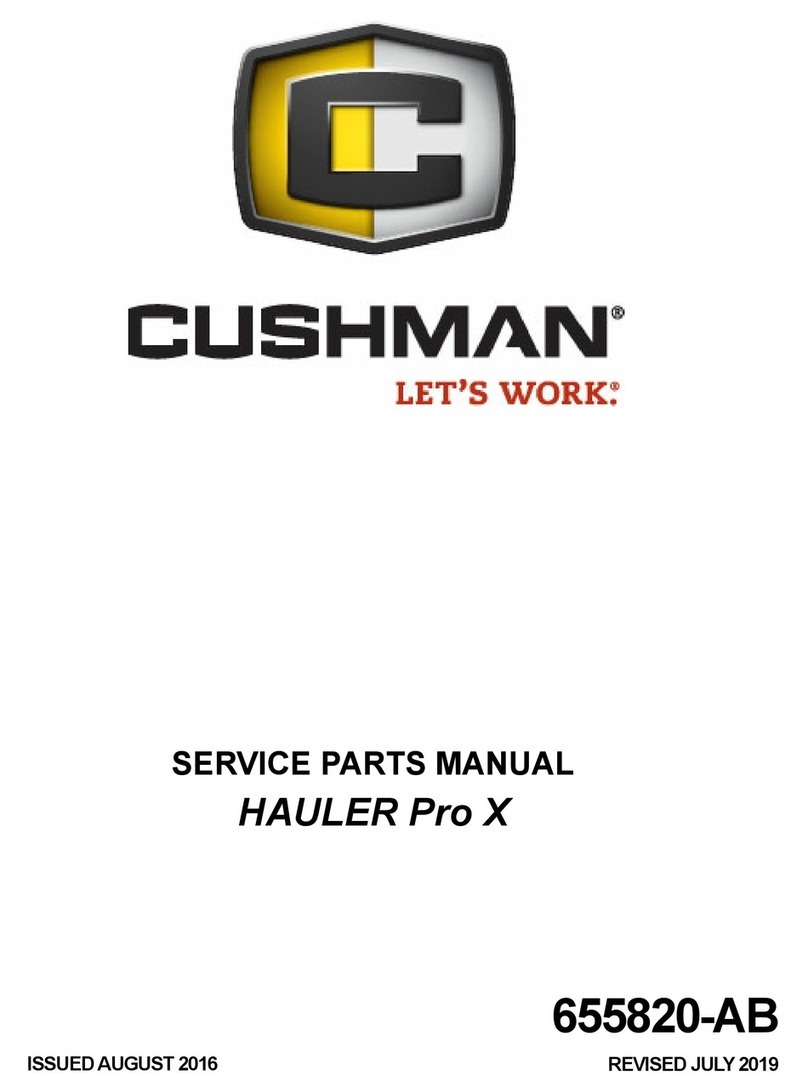
Cushman
Cushman HAULER PRO X Service & parts manual
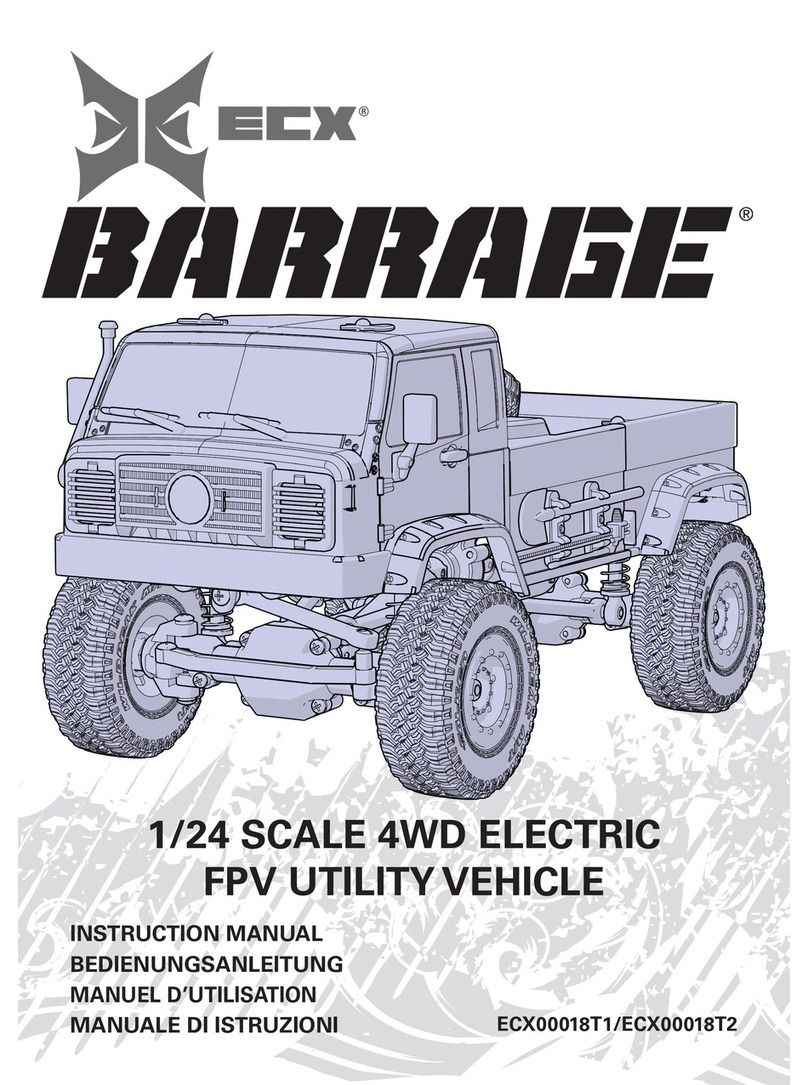
ECX
ECX BARRAGE ECX00018T1 instruction manual

Moto Electric Vehicles
Moto Electric Vehicles Bubble Car owner's manual
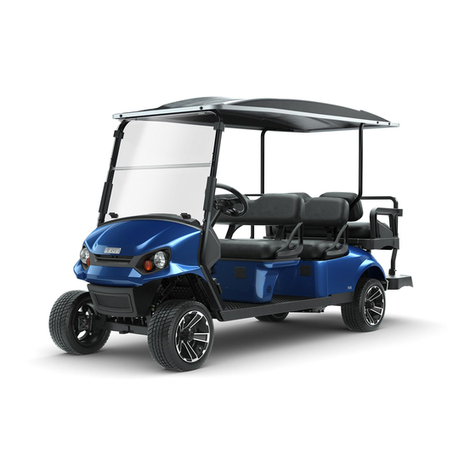
Ezgo
Ezgo Express S6 ELiTE owner's manual
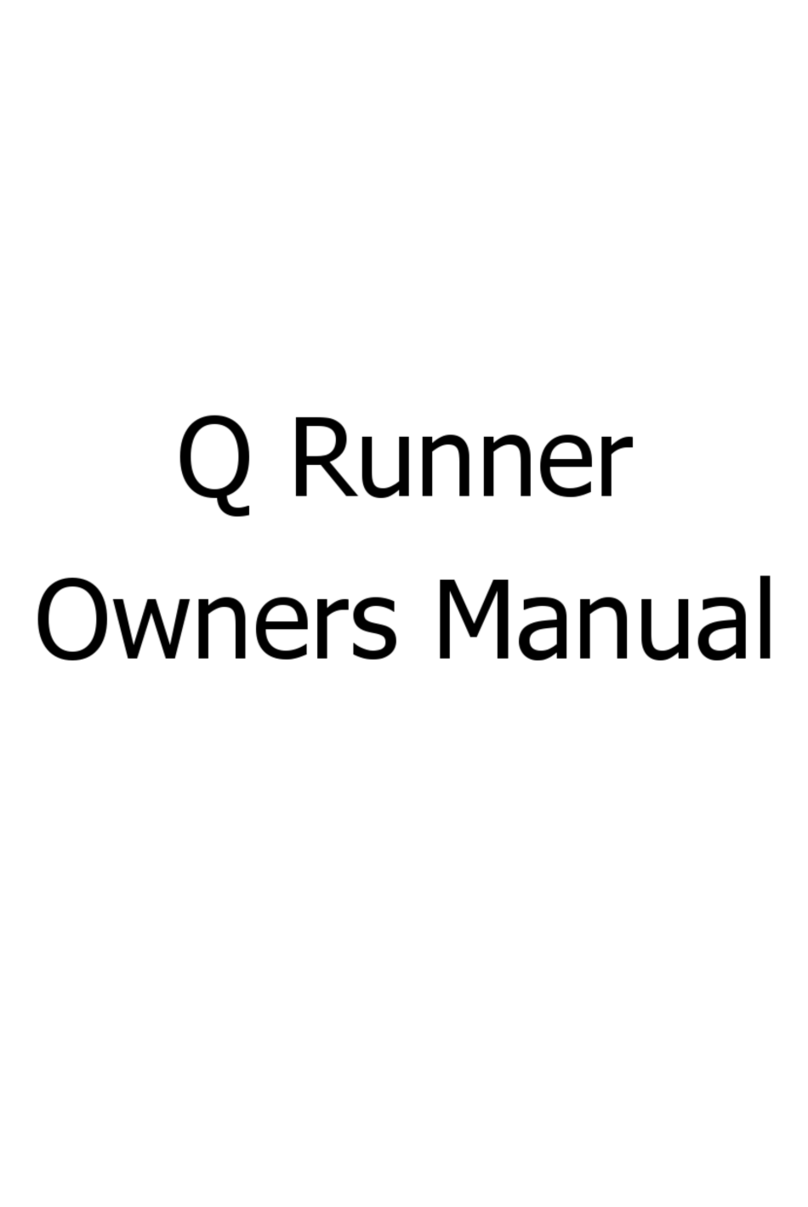
Green Transporter
Green Transporter Q Runner owner's manual
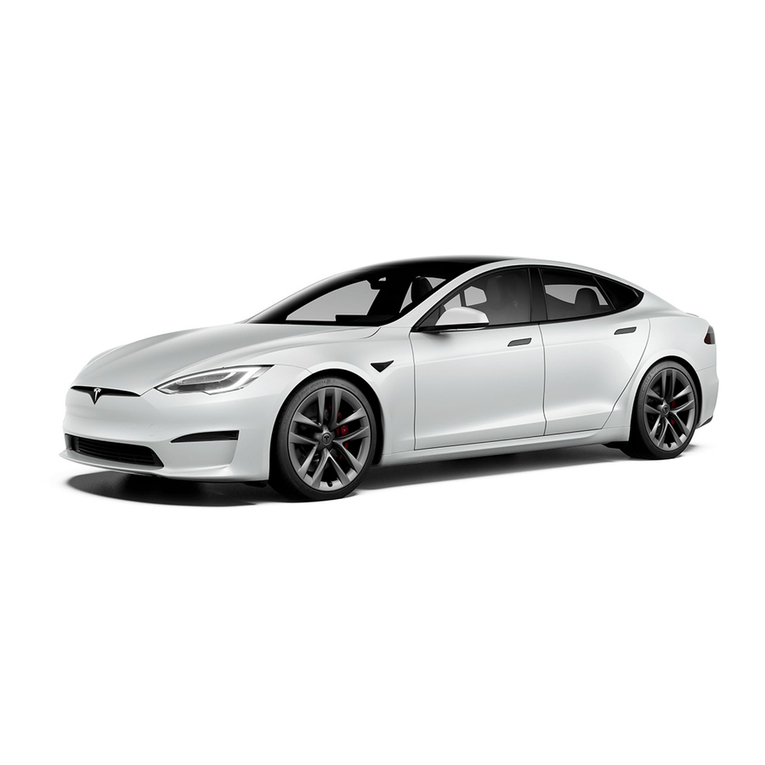
Tesla
Tesla MODEL S Owner Safety Information

Club Car
Club Car CARRYALL 300 GASOLINE Operator's manual

Club Car
Club Car DS Villager 4 Maintenance and service manual supplement
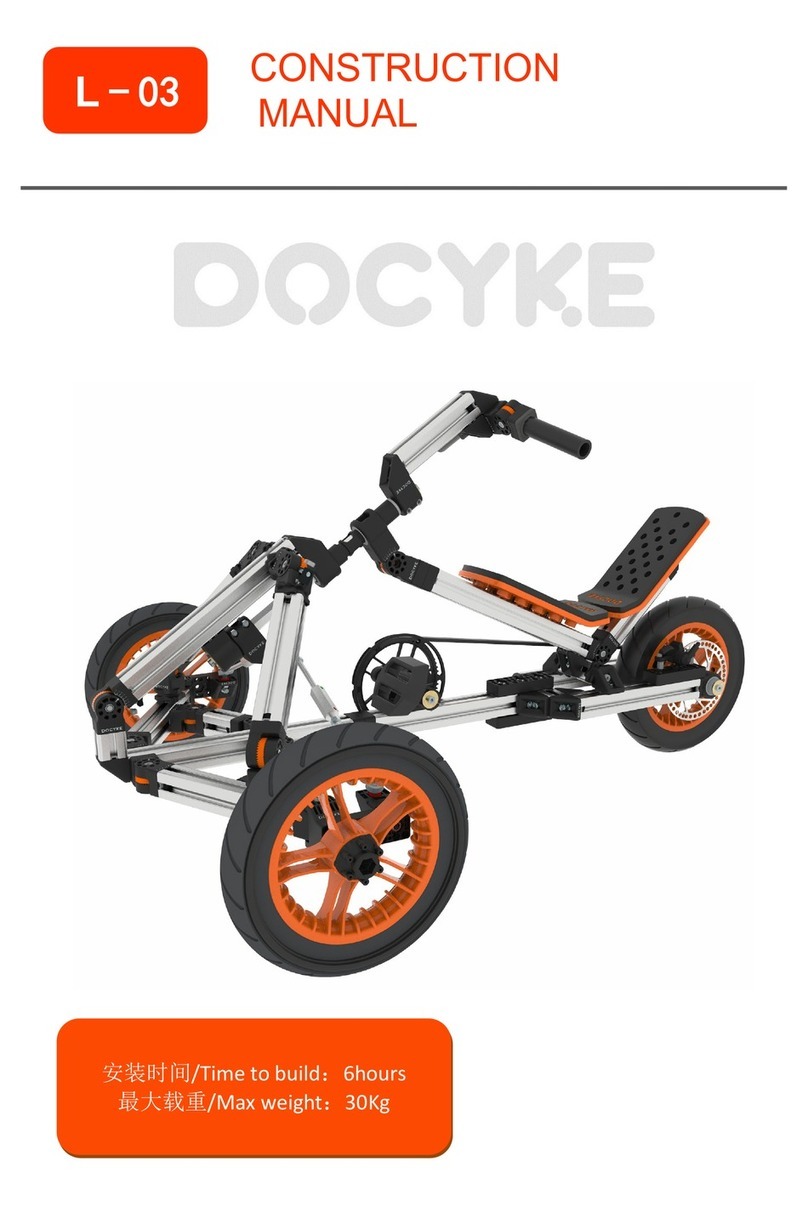
DOCYKE
DOCYKE L-03 Construction manual
